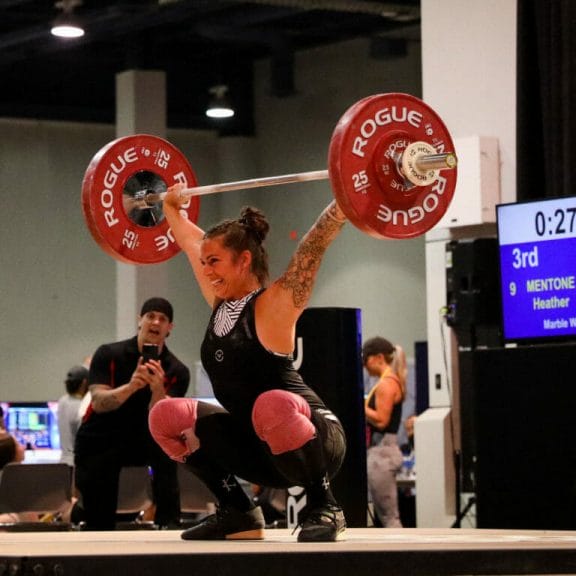The snatch is the first lift in weightlifting. It requires you to move a barbell from the floor to overhead in one explosive movement. It’s also one of the most revered and difficult lifts out there. The good news? With some practice and focus, you can do this lift too!
Snatch Pulls

The snatch pull is a great way to build strength and power. The movement pattern is similar to the full snatch, but it does not require you to stand fully upright as in a regular snatch. Snatch pulls can be performed with different heights of weight on the barbell (the weight can be anywhere between 25% and 75% of your maximum); however, they are most commonly done at 80-90% or higher for more advanced athletes.
It’s important to note that snatches and snatch pulls should only be performed when your body is fully warmed up so that any potential injury risk is minimized.
The benefits of using this technique include building muscle mass in your upper back, shoulders, arms and core area; improving dynamic flexibility through coordinated actions such as hip hinging while standing tall over the barbell; developing an ability to accelerate moving objects quickly without losing balance or falling forward with them; learning how not make mistakes like dropping weights off balance during lifts (commonly known as “pressing out”).
Halting Snatches
Halting snatches are a great way to build strength in the back and core to help stabilize weight from the floor. They’re also helpful for beginners who are just starting out to maintain proper positions throughout the first and second pull.
When performing a Halting snatch, the Coach or athlete can choose to pause above or below the knee for typically a 3-5 second hold. Maintaining your position and control over the bar is paramount to building strength for bigger lifts later on.
Halting snatches also help the Coach or athlete see where there may be an issue in the pull and we can make corrections since the movement is halted for a moment.
Using light weights when starting out is essential to building proper movement patterns. Once you feel comfortable performing this exercise with lighter weights safely, add more plates so you can continue progressing towards greater strength gains as well as building confidence under heavier loads.
Overhead Squats
Overhead squats are a great tool for developing your legs, core, and balance. The movement trains you to stay upright even during the “deadlift” portion of the snatch when you must stand up from an awkward position.
Overhead squats strengthen your quads, hamstrings and glutes (found in the thigh) as well as your calves and core muscles. You’ll also be able to lift more weight on other exercises by improving these areas through overhead squatting!
Work on Speed
The snatch, as well as the clean and jerk, are both explosive lifts that require speed to push your bodyweight from the ground to overhead. While you can get away with being a little slower when you’re lifting lighter weights, if there’s one thing that sets elite lifters apart from intermediate ones it’s their ability to move fast under heavy loads.
To improve your speed for weightlifting:
- Do plyometric exercises like box jumps or jumping lunges. These will help build up your fast-twitch muscle fibers and increase your power output.
- Increase the number of repetitions during your training sessions—you’ll find that having an extra rep in each set will help you feel lighter on the bar during competitions!
Work on Power
Power is a very important concept in weightlifting, as it’s directly related to the amount of weight you can move. Power is measured in watts and also known as work-per-unit-time (W/s). It describes how much work you’re able to do during a certain time period.
To improve your power, you’ll have to incorporate exercises that build it into your training program. For example:
- Box jumps are great for developing leg strength, which leads to more powerful leg drive on your lifts
- The hang Snatch is another great explosive movement used by many Olympic lifters because of its ability to increase speed off the floor and develop force production
Apply these 5 techniques to your workout routine and you’ll be crushing PRs in no time!
There is a lot to learn about improving your snatch, but the most important thing to remember is that no one is perfect. You will miss lifts and make mistakes, but if you keep trying and working hard then you’ll eventually get there!


